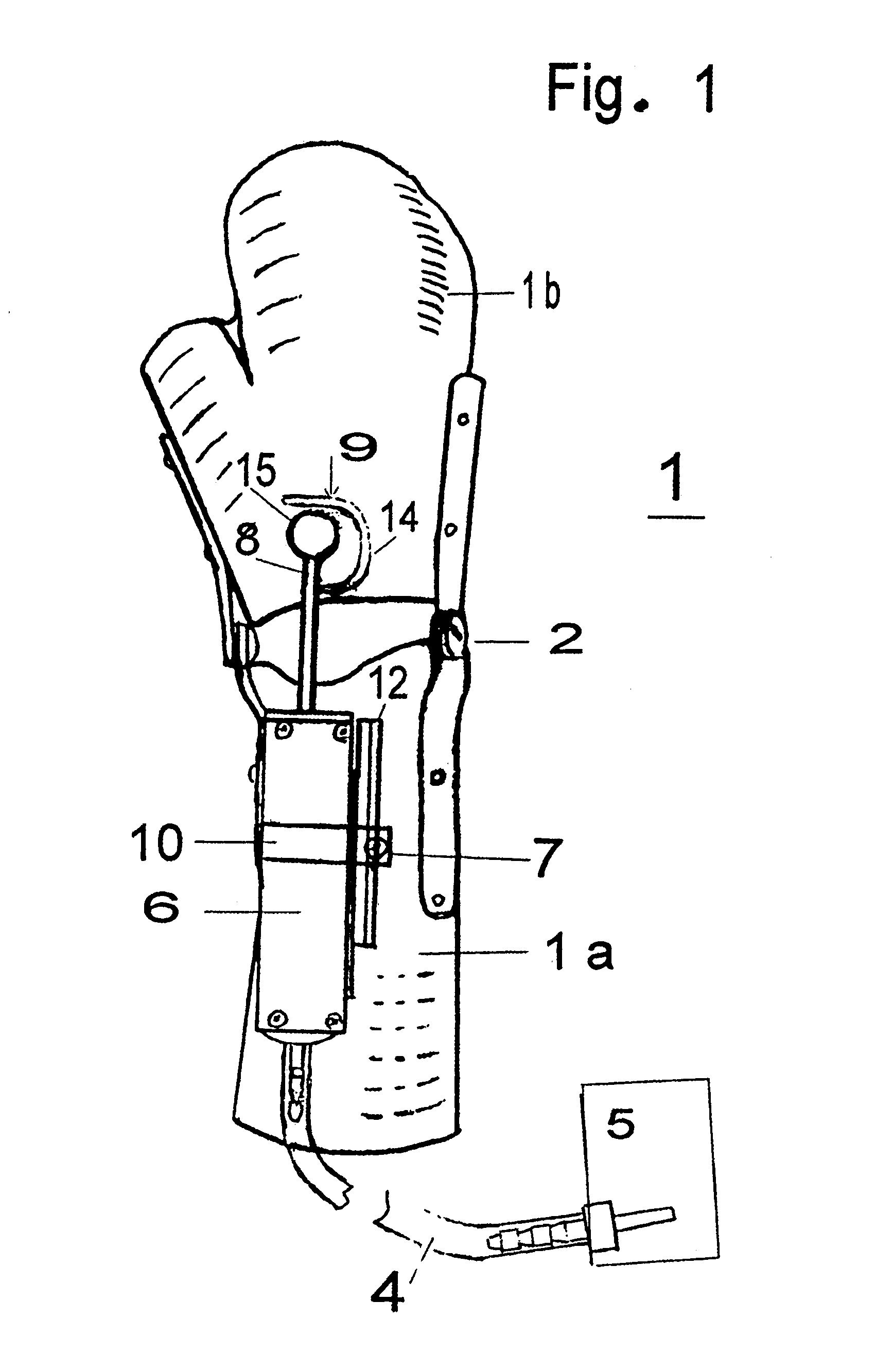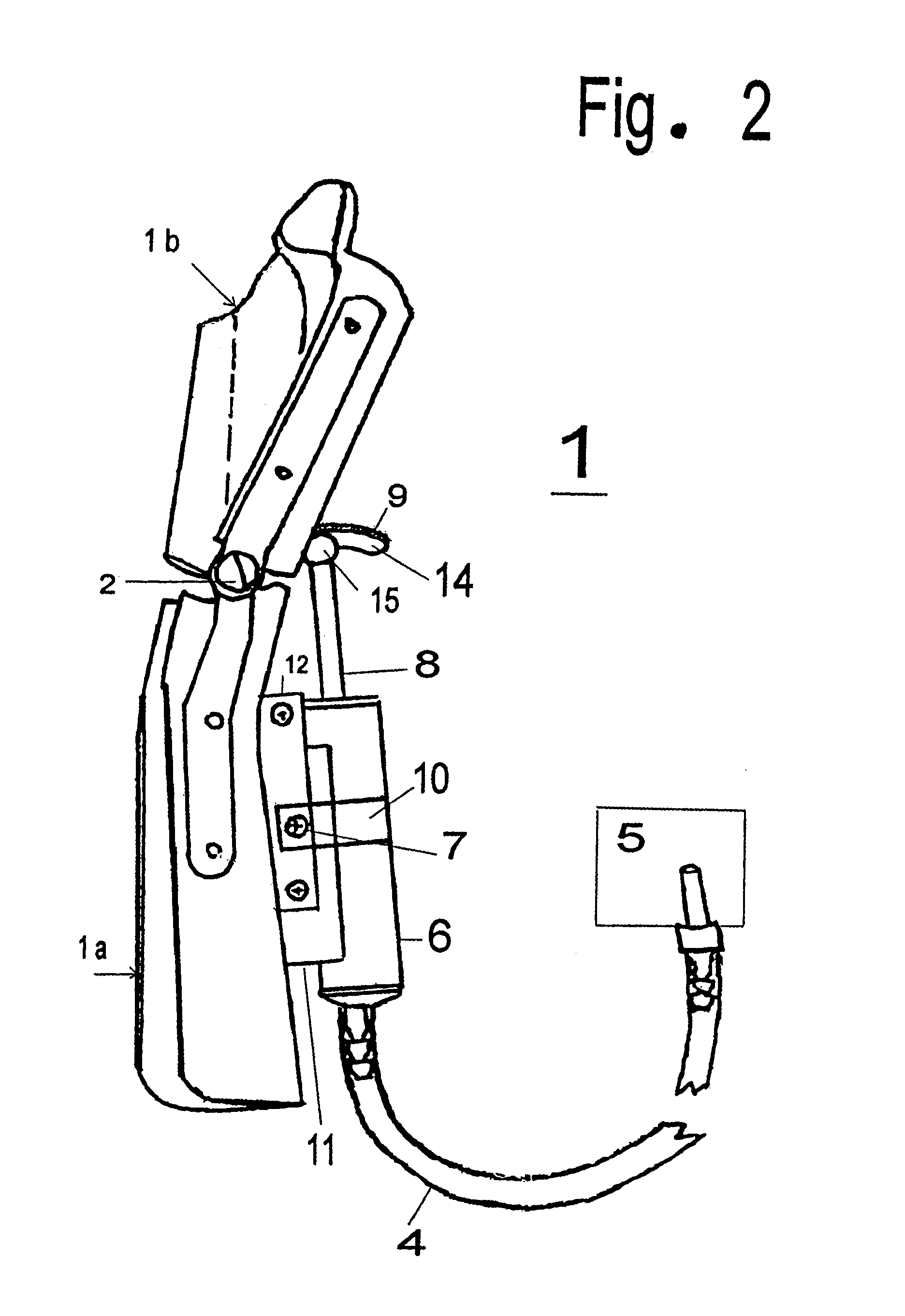Corrective orthesis
a technology of orthesis and quengle force, applied in the field of corrective orthesis, can solve the problems of inability to check the therapeutic effect in the course of joint treatment, inability to reproducible and control the setting of quengle force that acts on the joint, and inability to adjust the quengle force only in inaccurate ways
- Summary
- Abstract
- Description
- Claims
- Application Information
AI Technical Summary
Benefits of technology
Problems solved by technology
Method used
Image
Examples
Embodiment Construction
[0021]Referring to the drawings in particular, FIGS. 1 and 2 show a first exemplary embodiment of the Quengle cast 1 according to the present invention. The Quengle cast 1 is designed as a hand cast in this case and is used for the therapy of stiffening or false positions of human hand joints.
[0022]The hand cast comprises essentially a first cast part 1a and a second cast part 1b, which are connected to each other in an articulated manner. The first cast part 1a is used to support a lower arm, and the second cast part 1b is used to support the hand connected to it.
[0023]A correcting unit, which is designed as a pneumatic correcting unit 3 in this case, is fastened to the hand cast. It is also possible, in principle, to use hydraulic correcting units or the like. The pneumatic correcting unit 3 is connected to a control unit 5 via a flexible tube 4.
[0024]The pneumatic correcting unit 3 controlled via the control unit 5 is used to preset a Quengle force, with which the hand joint is f...
PUM
 Login to view more
Login to view more Abstract
Description
Claims
Application Information
 Login to view more
Login to view more - R&D Engineer
- R&D Manager
- IP Professional
- Industry Leading Data Capabilities
- Powerful AI technology
- Patent DNA Extraction
Browse by: Latest US Patents, China's latest patents, Technical Efficacy Thesaurus, Application Domain, Technology Topic.
© 2024 PatSnap. All rights reserved.Legal|Privacy policy|Modern Slavery Act Transparency Statement|Sitemap



